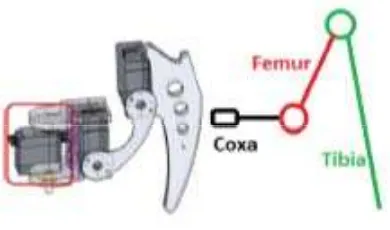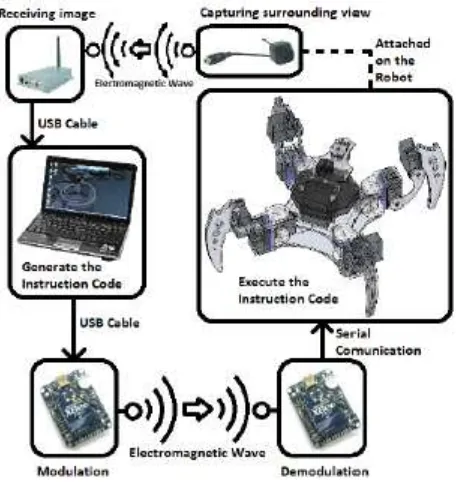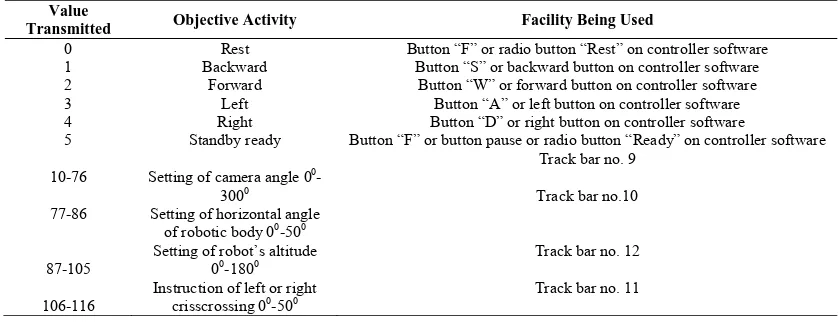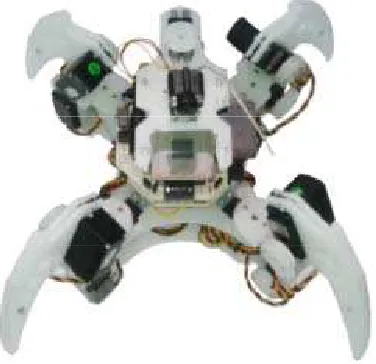Editorial Team
Editor-in-Chief
1.
Prof. nzw. dr hab. inz. Lech M. Grzesiak
, Warsaw University of Technology, Poland
Managing Editors
1.
Tole Sutikno
, Universitas Ahmad Dahlan, Indonesia
2.
Dr. Auzani Jidin
, Universiti Teknikal Malaysia Melaka (UTeM), Malaysia
Editors
1.
Prof. Dr. Faycal Djeffal
, University of Batna, Batna, Algeria
2.
Prof. Dr. Geetam Singh Tomar
, University of Kent, United Kingdom
3.
Prof. Dr. Govindaraj Thangavel
, Muthayammal Engineering College, India
4.
Prof. Dr. Kewen Zhao
, Qiongzhou University, China
5.
Prof. Dr. Sayed M. El-Rabaie
, Minufiya University, Egypt
6.
Prof. Dr. Ir. Sim Kok Swee
, Multimedia University, Malaysia
7.
Prof. Dr. Tarek Bouktir
, Ferhat Abbes University, Setif, Algeria
8.
Assoc. Prof. Farrokh Attarzadeh, Ph.D.
, University of Houston, United States
9.
Assoc. Prof. Dr. Jaime Lloret Mauri
, Polytechnic University of Valencia, Spain
10.
Assoc. Prof. Dr. Wudhichai Assawinchaichote
, King Mongkut's University of
Technology Thonburi, Thailand
11.
Assoc. Prof. Dr. M L Dennis Wong
, Swinburne University of Technology Sarawak
Campus, Malaysia
12.
Assoc. Prof. Dr. Mochammad Facta
, Universitas Diponogoro (UNDIP), Indonesia
13.
Dr. Vicente Garcia Diaz
, University of Oviedo, Spain
14.
Prof. Abdel Ghani Aissaoui
, University of Bechar, Algeria, Algeria
15.
Dr. Ahmad Saudi Samosir
, Universitas Lampung (UNILA), Indonesia
16.
Dr. Deris Stiawan, C|EH, C|HFI
, Universitas Sriwijaya, Indonesia
17.
Dr. Eng Khoirul Anwar
, Japan Advanced Institute of Science and Technology, Japan
18.
Dr. Junjie Lu
, Broadcom Corp., United States
19.
Dr. Mokhtar Beldjehem
, University of Ottawa, Canada
20.
Dr. Munawar A Riyadi
, Universiti Teknologi Malaysia, Malaysia
21.
Dr. Nidhal Bouaynaya
, University of Arkansas at Little Rock, Arkansas, United
States
22.
Dr. Renjie Huang
, Washington State University, United States
23.
Dr. Ranjit Kumar Barai
, Jadavpur University, India
24.
Dr. Shadi A. Alboon
, Yarmouk University, Jordan
25.
Dr. Vijay H. Mankar
, Government Polytechnic of Nagpur, India
26.
Dr. Angela Amphawan
, Universiti Utara Malaysia, Malaysia
27.
Dr. Yin Liu
, Symantec Core Research Lab, United States
28.
Dr. Yudong Zhang
, Columbia University, United States
29.
Dr. Zheng Xu
, IBM Corporation, United States
Abstracting and Indexing
- SCOPUS
-
Google Scholar Profile
-
Scholar Metrics
h5-index:3 h5-median:4
-
DOAJ - Directory of Open Access Journals
- ProQuest
- EBSCO
-
BASE (Bielefeld Academic Search Engine)
-
Bibliothekssystem Universität Hamburg
-
University Library of Regensburg
-
SHERPA/RoMEO, University of Nottingham
-
NewJour
-
Science Central
-
JournalTOCs
(or
click in here
)
-
University of Zurich
-
Indonesian Publication Index (IPI)
-
CORE (COnnecting REpositories) - Knowledge Media Institute (KMi)
Witdrawal of Manuscripts
Authora are not allowed to withdraw submitted manuscripts, because the withdrawals are
waste of valuable resources that editors and referees spent a great deal of time processing
submitted manuscript, money and works invested by the publisher.
If authors still request withdrawal of their manuscripts when the manuscripts are still in the
peer-reviewing process, authors will be punished with paying $200 per manuscript, as
withdrawal penalty to the publisher. However, it is unethical to withdraw a submitted
manuscripts from one journal if accepted by another journal. The withdrawal of manuscripts
after the manuscripts are accepted for publication, author will be punished by paying US$500
per manuscript. Withdrawal of manuscripts are only allowed after withdrawal penalty has
been fully paid to the Publisher.
If author don't agree to pay the penalty, the authors and their affiliations will be blacklisted
for publication in this journal. Even, their previously published articles will be removed from
our online system.
Vol 5, No 2
April 2015
Table of Contents
Social Network Applications and Free Online Mobile Numbers: Real Risk
Mehdi Dadkhah, Tole Sutikno, Shahaboddin Shamshirband
175-176
A Novel Method for Frequency Estimation Considering Instrument Transient Effect
Mohsen Tajdinian, Mehdi Zareian Jahromi, Mojtaba Jalalpour
177-188
Voltage Stability Analysis and Stability Improvement of Power System
Pavithren Pavithren, Raman Raghu Raman, Pratap Nair, K. Nithiyananthan
189-197
Power System Oscillation Damping Using New Facts Device
D. Narasimha Rao, V. Saritha
198-204
A Novel Method for Rotor Field-Oriented Control of Single-Phase Induction Motor
M. Jannati, T. Sutikno, N. R. N. Idris, M. J. A. Aziz
205-212
A Power System Stabilizer for Multi-Machine Power Based on Hybrid BF0A-PSO
Mary Saranya, Rajapandiyan A, Fathima K., Hema S, GeethaPriya S, Saravanan S 213-220
Simplified Method for Single Line to Ground-Fault Location in Electrical Power
Distribution Systems
Mustapha Zahri, Youssef Menchafou, Hassane El Markhi, Mohamed Habibi
221-230
DC UPS for Critical Loads
Ganesh S, Chiranjit Ghosh T, Kokilasree R, Nandhakumar M, Md Haroon Alim T 231-242
Three-Dimensional Devices Transport Simulation Lifetime and Relaxation
Semiconductor
Nouar Fadila Souad, Mansouri Seddik, Amrani Mohamed, Marie Pierre, Massoum
Ahmed
243-250
Design and Implementations of Control System Quadruped Robot Driver
Application Based on Windows Platform
Made Sudarma, IBA Swamardika, IW Dani Pranata
251-258
Recursive Least-Squares Estimation for the Joint Input-State Estimation of Linear
Discrete Time Systems with Unknown Input
Talel Bessaoudi, Fayçal Ben Hmida
259-270
Measurement of Information System Project Success Based on Perceptions of the
Internal Stakeholders
A'ang Subiyakto, Abd. Rahman Ahlan, Mira Kartiwi, Husni Teja Sukmana
271-279
Improvement of Step Tracking Algorithm Used for Mobile Receiver System via
Satellite
Tran Van Hoi, Nguyen Xuan Truong, Bach Gia Duong
280-288
The Extended Dijkstra’s
-based Load Balancing for OpenFlow Network
Discrete Markov Chain Based Spectrum Sensing for Cognitive Radio
Mohammadreza Amini, Asra Mirzavandi, Mosrafa Rezaei
297-303
Classification of Emotional Speech of Children Using Probabilistic Neural Network
Hemanta Kumar Palo, Mihir Narayan Mohanty
311-317
Coloring of Cervical Cancer’s Ct Images to Localize Cervical Cancer
Erlinda Ratnasari Putri, Amar Vijai Nasrulloh, Arfan Eko Fahrudin
304-310
Ontology-based Why-Question Analysis Using Lexico-Syntactic Patterns
A.A.I.N. Eka Karyawati, Edi Winarko, Azhari Azhari, Agus Harjoko
318-332
Bus Arrival Prediction
–
to Ensure Users not to Miss the Bus
Lutfi Fanani, Achmad Basuki, Deron Liang
333-339
Big Data: challenges, opportunities and Cloud based solutions
Hamid Bagheri, Abdusalam Abdullah Shaltooki
340-343
Towards a System of Guidance, Assistance and Learning Analytics Based on Multi
Agent System Applied on Serious Games
Lotfi Elaachak, Amine Belahbibe, Mohammed Bouhorma
344-354
Multiple Processes for Least Mean Square Adaptive Algorithm on Roadway Noise
Cancelling
Sri Arttini Dwi Prasetyowati, Adhi Susanto
355-360
A Novel Spectral Clustering based on Local Distribution
Jyotsna Kumar Mandal, Parthajit Roy
361-370
SeamSAR: Seamless, Secure And Robust Handover Model for Mobile IPTV Network
Using Enhanced FMIPv6
Ismat Aldmour, Thair Al-
Dala’in, Lelyzar Siregar, Rahmat Budiarto
371-378
This work is licensed under a
Creative Commons Attribution 3.0 License
.
International Journal of Electrical and Computer Engineering (IJECE) Vol. 5, No. 2, April 2015, pp. 251~258
ISSN: 2088-8708 251
Journal homepage: http://iaesjournal.com/online/index.php/IJECE
Design and Implementations of Control System Quadruped
Robot Driver Application Based on Windows Platform
Made Sudarma, IBA. Swamardika, IW. Dani Pranata.
Department of Electrical and Computer Engineering, Faculty of Engineering, Udayana University, Bali, Indonesia
Article Info ABSTRACT
Article history:
Received Nov 25, 2014 Revised Jan 20, 2015 Accepted Feb 7, 2015
Wireless remote device control system is a controlling method which is widely used in various fields. By using wireless communication media, remote control system becomes more efficient and flexible. Computer application is one of the devices which can be used to perform remote controlling. Computer application can be made in accordance with the need of its users in conducting device controlling from the distance. Remote controlling is also can be applied on the robotic field. One of the examples is wireless remote controlling of Quadruped Robot. By utilizing its Windows application such as Visual Basic in order to establish communication with wireless communication module such as Xbee-PRO, a control system can be designed which can be used to control the movement of Quadruped Robot wirelessly. Wireless communication module is also has to be installed and able to perform data communication with the device to be controlled that is Quadruped Robot. The addition of camera which is also using wireless communication system will be very helpful for the users in knowing the condition around Quadruped Robot.
Keyword:
Controller application Quadruped robot Robotic controller Xbee-PRO
Copyright © 2015 Institute of Advanced Engineering and Science. All rights reserved.
Corresponding Author:
Dr. Ir. Made Sudarma, M.A.Sc.,
Departement of Electrical and Computer Engineering, Engineering Faculty, Udayana University,
Jimbaran Campus, Kuta 80361, Bali, Indonesia.
Email: [email protected], Telp./Fax. : +62361703315
1. INTRODUCTION
Computer application is a series of computer software which is using the capability of the computer itself to perform certain tasks according to the wish of its users to achieve certain objective. Computer applications are vastly made and developed for various things, such as word, number and picture processing, and many other purposes [1-5]. The development and creation of computer application is not limited only on the factories or development companies and computer manufacturers [6]. Almost anybody who is mastering a programming language can create their own computer applications, as well as developing the existing computer application. Computer application is also can be used to perform the job outside of the computer, such as performing the controlling towards the device outside of the computer [7].
ISSN: 2088-8708
IJECE Vol. 5, No. 2, April 2015 : 251 – 258 252
2. RESEARCH METHOD
The following activity of research and described of the research method such as:
2.1.Software design
1. Visual Basic 2008 Express Edition: It is used to develop other application based on Windows operating
system. In this study, Visual Basic 2008 Express Edition application will be used to develop application to control the movement of Quadruped Robot [8].
2. Codevision AVR: It is used to perform the programming for the microcontroller Integrated Circuit (IC)
which is a main processing unit presence in Quadruped Robot. In this study, Codevision AVR application will be used to perform programming on Quadruped Robot [1,10].
3. X-CTU software: It is used to perform configuration for XBee wireless module. Besides for performing
configuration, X-CTU software also has some other facilities such as, PC Setting, Range Test, and Terminal. PC Setting facility is used to perform connection trial between PC and XBee module. Range Test facility is used to perform the accuracy measurement of data transmission and receiving by 2 XBee modules in the certain distance [2]. Terminal facility is used to display the data being transmitted and received by XBee modules.
2.2.Hardware design
1. XBee-PRO Series I 60 mW: is an electronic module used to perform data communication wirelessly.
Protocol standard being used is ZigBee which refers to the standard of IEEE 802.15.4. Working frequency being used is 2.4 Ghz, with the range of indoor communication as far as 133 feet or 40 meters, and the range of outdoor communication as far as 400 feet or 120 meters. The speed of RF (Radio Frequency) data transfer is 250,000 bps, and the speed of serial communication data transfer is 1,200 bps up to 1 Mbps. For the system to work properly, XBee-PRO Series I 60 mW requires power supply of 2.8 VDC up to 3.3 VDC [2,5].
2. ATmega1280: It is a microcontroller IC which is being manufactured by Atmel from the family of AVR
(Alf and Vegard’s Rise). ATmega1280 has a package form of TQFP (Thin Profile Plastic Quad Flat Package). ATmega1280 is selected as main processing unit, since it has flash memory to store program of 128 KiloByte, and adequate facility to perform all the process to drive Quadruped Robot. The facility includes, 4 units of 16-bit timers to drive each foot of Quadruped Robot, the speed of instruction execution up to 16 MIPS (Million Instructions per Second), 54/86 I/O (Input/Output) ports which can be programmed, USART serial communication to communicate with XBee-PRO Series I 60 mW module [4,6].
3. Servo Motor: It is a DC motor which its shaft rotation angle can be set by providing certain PWM (Pulse
Width Modulation) pulse value to the servo motor. PWM is a square wave signal with fixed frequency, but having a ratio of high pulse and low pulse that can be set [3]. In each foot of Quadruped Robot uses 1 unit of servo motor HS-225MG, and 2 units of HS-645MG. These two types of servos have angular movement range of 180 degree. Servo motor HS-645MG has a physical form and torque which is greater than servo HS-225MG. Servo HS-225MG has a torque reaching 4.8 kg.cm, whereas servo HS-645MG has a torque reaching 9.6 kg.cm. Figure 1 is a laying system of servo HS-225MG in the coxa section.
IJECE ISSN: 2088-8708
Design and Implementations of Control System Quadruped Robot Driver Application …(Made Sudarma)
253
2.3.The Design of Quadruped Robot
Quadruped Robot acts as an entity which its movement will be controlled. Quadruped Robot uses microcontroller ATmega1280 as a control unit and main processing unit. In Figure 2 the main driver on each foot of Quadruped Robot is using servo motor HS-225MG and HS-645MG which is used as a motor. Each foot of Quadruped Robot has 3 DOF (Degree of Freedom).
Figure 2. Design of physical form of quadruped robot
There are four main entities which are inter-connected and each has an important role. The four entities are, 1 unit laptop or PC with Windows operating system, 2 units of XBee-PRO Series I 60 mW, one Quadruped Robot, one wireless camera, and one wireless camera receiver. The utilization of wireless camera device is intended to help finding out the situation around Quadruped Robot, when the position of Quadruped Robot is out of view or blocked by certain thing [2]. Figure 3 is the direction of data flow and the process performed, during the controlling process, the movement of Quadruped Robot is using application based on Windows.
ISSN: 2088-8708
IJECE Vol. 5, No. 2, April 2015 : 251 – 258 254
The design of controller application being developed, it has a quite simple display. The function of every existing button and control facility is equipped with icon representing the function of that button or control facility. There are 18 facilities owned by the controller application, consists of 12 control facilities and 6 display facilities. Besides it is using the facilities on the controller application, some buttons on the keyboard also can be used to provide instructions to Quadruped Robot. The utilization of some keyboard’s buttons is limited only to several simple instructions [9].
The action or value change carried out on each control facility will be interpreted as giving an order and the transmission process of command value will be carried out 5 times to the Quadruped Robot, in accordance with command value being owned or referred on the concerned control facility. The repeated data transmission of 5 times is aimed to reduce the risk of the occurrence of reading errors due to the loss of data or damaged data. Table 1 is a correlation between command value being transmitted and the movement which will be performed by the Quadruped Robot.
Table 1. Correlation between command value and the movement of Quadruped Robot.
Value
Transmitted Objective Activity Facility Being Used
0 1 2 3 4 5 10-76 77-86 87-105 106-116 Rest Backward Forward Left Right Standby ready
Setting of camera angle 00 -3000
Setting of horizontal angle of robotic body 00-500 Setting of robot’s altitude
00-1800 Instruction of left or right
crisscrossing 00-500
Button “F” or radio button “Rest” on controller software Button “S” or backward button on controller software
Button “W” or forward button on controller software Button “A” or left button on controller software Button “D” or right button on controller software
Button “F” or button pause or radio button “Ready” on controller software Track bar no. 9
Track bar no.10
Track bar no. 12
Track bar no. 11
Video display application is an additional application which can be accessed from controller application that will be used to display the video received from wireless camera. The source of picture or video is obtained from camera receiver connected with PC or laptop by using USB cable. Video display application has a simpler display compared with controller application. Video display application has 4 facilities, among others, 3 control facilities and one display facility.
3. RESULTS AND ANALYSIS
IJECE ISSN: 2088-8708
Design and Implementations of Control System Quadruped Robot Driver Application …(Made Sudarma)
255
Figure 4. Physical performance of quadruped robot
The result of controller application based on Windows when the command “rest” is activated, is shown with Figure 5 whereas Figure 6 is a display when the command “ready” is activated. The numbering in red with moderate size, which laid on each of controller application facility, is intended to help explain the description of each facility.
Figure 5. Controller applications display with active rest
ISSN: 2088-8708
IJECE Vol. 5, No. 2, April 2015 : 251 – 258 256
The description of each facility is in accordance with the numbering which has been stated, as follows:
1. Radio Button is to give rest instruction to the Quadruped Robot.
2. Radio Button is to give standby instruction or ready to receive instruction from controller software.
3. Check Box is to activate the use of monitor on controller software to display the picture obtained from wireless camera.
4. Forward Button, to give command for walking forward.
5. Right Button, to give command for walking toward the right.
6. Backward Button, to give command for walking backward.
7. Left Button, to give command for walking toward the left.
8. Standby Button, to give command to standby.
9. Track Bar to drive the camera.
10. Track Bar to direct horizontal angle of Quadruped Robot toward vertical axis. The change of the angle is carried out when Quadruped Robot is in the state of motionless.
11. Track Bar to give instruction to turn in the place.
12. Track Bar to adjust the altitude of the robot. This motion is performed when Quadruped Robot is in the state of motionless.
13. Text Box to display the altitude value pointed by the track bar of altitude regulator.
14. Text Box to display the camera angle value pointed by the track bar of camera angle regulator.
15. Text Box which is being used to display the horizontal angle value pointed by the track bar of horizontal angle regulator of Quadruped Robot.
16. Text Box which is being used to display the turning angle value pointed by the track bar of turning angle regulator.
17. Text Box to display the letter of the button pressed on the keyboard to give command.
18. Text Box to display the value of instruction being transmitted.
Figure 7. X-CTU application display
The testing of controller application is conducted by way of connecting XBee-PRO receiver on Quadruped Robot with PC and activates X-CTU application on the PC. It is aimed to read the result data received by XBee-PRO receiver from XBee-PRO transmitter through terminal facility on X-CTU application [5]. By conducting the testing toward the transmission of 5 samples command data, trial result is obtained which is summarized show in Table 2. Based on the data obtained, data value which is being sent and the amount of data being sent is matching, so that controller application has been running well.
Table 2. The trial result of transmitting command data
No. Button Value sent Value
received
Amount of data sent
Amount of data received
1 Forward 2 2 5 5
2 Right 4 4 5 5
3 Backward 1 1 5 5
4 Left 3 3 5 5
5 Standby 5 5 5 5
IJECE ISSN: 2088-8708
Design and Implementations of Control System Quadruped Robot Driver Application …(Made Sudarma)
257
The display result of video display application is shown on Figure 8. The numbering in red on Figure 8 is intended to simplify the description regarding function of each facility owned by video display application.
Figure 8. Video application display preview
The description of each video display application facility is in accordance with the numbering being stated, as follows:
1. Monitor to display the picture being sent by camera transmitter presence on Quadruped Robot.
2. Button to activate the process of image capture from camera transmitter and then to display it to the monitor.
3. Button to turn off the process of capturing and displaying image.
4. Text Box which displays directory to capture image data sent by camera transmitter on Quadruped Robot.
The testing of video display application is carried out by capturing the image directly from Windows camera through wireless camera receiver. The trial result can be seen in Figure 9. Based on the result obtained, it can be seen that video display application has succeeded to display video or live view captured by wireless camera. Based on the testing toward all of control facilities in providing the command to Quadruped Robot, the result is obtained that Quadruped Robot can perform the movement which is matching with command value given on controller software well. [9]
Figure 9. Video display application preview
4. CONCLUSION
ISSN: 2088-8708
IJECE Vol. 5, No. 2, April 2015 : 251 – 258 258
1. Controller application can provide and send command value well to the Quadruped Robot.
2. The utilization of video display application can help the controlling of Quadruped Robot movement when Quadruped Robot is not within the range of view, or blocked by certain thing.
ACKNOWLEDGEMENTS
I would like to express my very great appreciation to robotic team work of Electrical and Computer Engineering Department, Udayana Univerrsity. All of suggestions during the planning, doing of this research work, and also their willingness to give their time so generously must very much appreciated.
REFERENCES
[1] Andrianto H, 2008, “Pemrograman Mikrokontroler AVR ATmega16 Menggunakan Bahasa C [CodeVision AVR],” Bandung : Informatika Bandung
[2] Anonim. 2005. XBee® &XBee-PRO® 802.15.4 OEM RF Modules. [cited 2013 November 7 ]. AvaliableFrom : URL; http://www.cytron.com.my/datasheet/WirelessDevice/manual_xb_oemrfmodules_802.15.4.pdf
[3] Anonim.2010. Sinyal PWM. [cited 2013 November 8 ]. Avaliable From : URL; www.elektronika-dasar.web.id. [4] Anonim. 2012. ATmega1280 datasheet. [cited 2013 October 28]. Available From : URL;
http://www.atmel.com/Images/doc2549.pdf
[5] Ardika, K. 2013. ʻʻPerancangan SistemKendali Mobile Robot Jarak Jauh Menggunakan Wireless XBee-PRO Series 1 60mW Berbasis Mikrokontroller ATmega32ˮ.(Skripsi).Bali : Program Sarjana Universitas Udayana
[6] ATMEL Corporation, 2012, 8-bit Atmel Microcontroller with 64K/128K/256K Bytes In System Programmable Flash, http://www.atmel.com/images/doc2549.pdf, (diakses tanggal 4 September 2014).
[7] Heryanto, M.A dan Wisnu, A.P., 2007, “Pemrograman Bahasa C untuk Mikrokontroler ATmega” Yogyakarta: Andi.
[8] Kurniawan, E., 2011, Cepat Mahir Visual Basic. Yogyakarta: Andi.
[9] Shamsheer Verma, Chahat Deep Singh, Arvind Rehalia, 2014, Fully Automous and Controlled Quadraped Having Detection and Tracking, International Journal of Engineering and Technical Research (IJETR), ISSN: 2321-0869, Volume-2, Issue-9, September 2014





